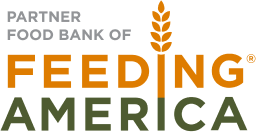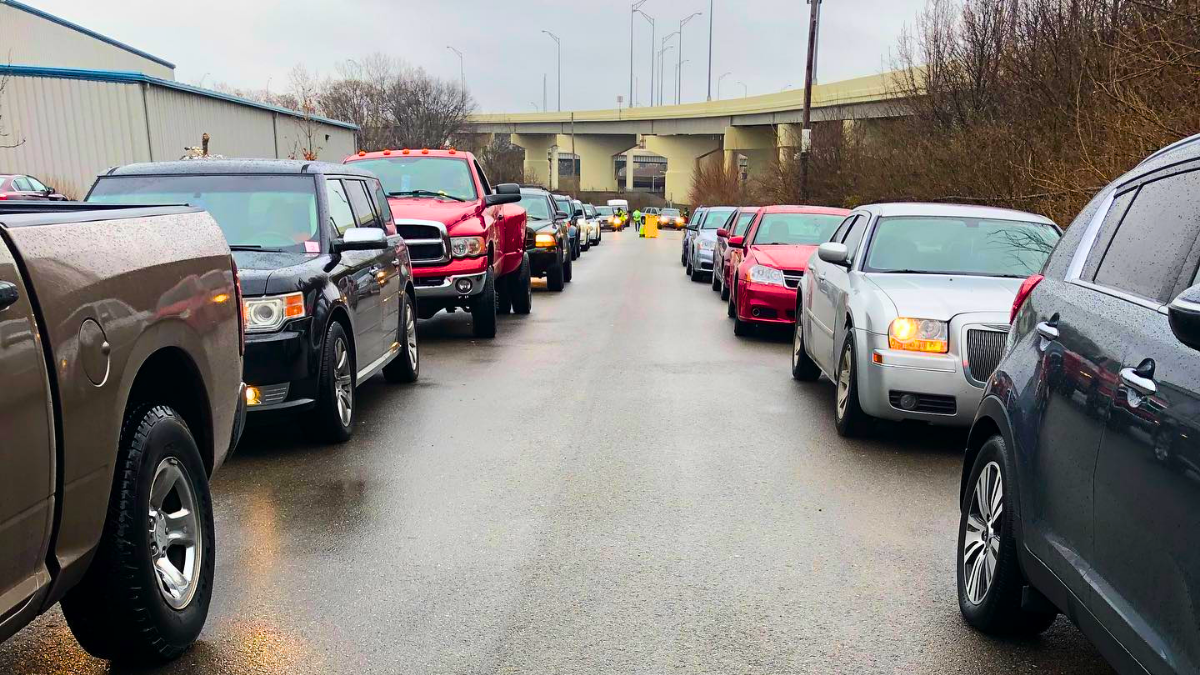SNAP Shortens Food Lines
How These Benefits Assist Our Fight Against Hunger
By Katie O’Donoghue Ly, Director of Strategic Initiatives
“Why should there be hunger and deprivation in any land, in any city, at any table, when man has the resources and the scientific know-how to provide all mankind with the basic necessities of life? There is no deficit in human resources. The deficit is in human will.”
– Martin Luther King, Jr.
Poverty and hunger persist
The United States is ranked the wealthiest country in the world, yet Martin Luther King, Jr.’s observation is as relevant today as it was nearly sixty years ago. Data reported in 2021 from the U.S. Census Bureau revealed almost 38 million Americans – or 1 in 10 of our brothers and sisters – live in poverty. In that same year, Feeding America shared the harsh reality that 53 million Americans needed to visit food banks to put food on their families tables. Even more startling for such a prosperous nation is the absurdity of 9 million children experiencing food insecurity.
Sadly, Dayton has the distinction of having one of the poorest populations in America for small to mid-size cities. In 2021, the city’s poverty rate was an astounding 27.6%. Given that fact, it is no surprise that more than 14% of individuals residing in Montgomery County experience food insecurity. That translates to about one in six households in the Dayton area that need more food to provide meals for the week.
The role of charitable food organizations
Like access to air and clean water, The Foodbank, Inc. believes that food is a fundamental human right. The Foodbank has led the charge in the local fight against hunger for nearly 50 years. “Feeding the line” has been central to The Foodbank’s mission from the beginning. However, when its doors first opened to provide emergency food relief for those in the community experiencing financial hardship, its founders could not have envisioned the large-scale operation and long-term community resource it has become today. By default, food banks across the nation have become a quasi-solution rather than an intervention to poverty-driven food insecurity.
The number of neighbors served by The Foodbank’s food has grown significantly since 2019. With over 60 employees (more than double its staff from 2019), a constantly expanding warehouse, and more than 100 partner agencies, The Foodbank continues to do what is necessary to keep pace to meet the needs of its tri-county service area. However, decreasing the need for emergency food relief is accomplished beyond the warehouse walls and food lines, where state and federal governments partner in the effort to reduce food insecurity through advocacy in funding food assistance programs.
SNAP reduces charitable food lines
While charitable food organizations serve the essential purpose of “feeding the line,” food assistance programs like the Supplemental Nutrition Assistance Food Program (SNAP) shorten them. SNAP is the most effective federal anti-hunger program in the United States. Last year alone, the SNAP program helped solve food insecurity for an estimated 40 million Americans. For every meal that Feeding America food banks provide, SNAP benefits provide nine.
SNAP benefits are delivered through an electronic benefits transfer (EBT) card and used to put food on the table when neighbors are experiencing financial hardship. Several factors, including household size, income, and other available resources, determine eligibility for SNAP benefits. The financial allotments help low-income families by bolstering their food budgets, reducing the need to visit food banks and area pantries. Nationwide, two out of three neighbors who receive SNAP benefits are children, older adults, or those living with disabilities. As a result, SNAP shortens food lines, helps build stronger and healthier families, and is a safety net for our most vulnerable citizens.
SNAP boosts the local economy
Last year, more than 1.5 million Ohioans were enrolled in SNAP and received an average of $273 in monthly assistance. Research shows that 97 percent of SNAP benefits are spent at local grocery stores and food retailers within two weeks of being issued, creating a favorable economic wave in communities. The community-based spending generates income for local markets and the workers who grow, produce, and transport the food. In addition, providing neighbors with this monthly food purchase allotment enables them to spend money on other essential needs, further boosting the local economy. A recent study found that every SNAP dollar spent during a sluggish economy increased Gross Domestic Product (GDP) by $1.54.
SNAP Emergency Allotments benefits eliminated
Effective March 1, 2023, funding for the three-year-old Emergency Allotments established at the onset of COVID-19, which provided an additional average monthly SNAP allotment of $95, was not renewed, impacting more than 673,000 Ohio households. Beyond putting more than half a million Ohioans at risk for a “hunger cliff,” the failed funding results in a $126 million reduction in SNAP monthly spending at local grocery stores and community markets. The benefit reduction carries the potential ripple effect of putting at risk local grocers already feeling the pinch during the current economic downturn.
Eliminating hunger requires a team effort of human will
State lawmakers have stated their optimistic goal of Ohio becoming known as the best place to raise a family. However, recent data reveals that there is much work to do before realizing that goal. According to 2021 research by Policy Matters Ohio, the Buckeye state is ranked 37th among 50 states in childhood poverty. Roughly 18.2% of all children in Ohio live in poverty compared the 16.9% of children nationally. Data shows that food-insecure children are more likely to suffer toxic stress and have poorer educational and health outcomes than their peers who live in more economically stable homes. With Ohio leading the national average for the number of children living in poverty, one needs to consider if the current data supports their ideal place to raise a family.
Together, we can improve Ohio’s current situation. Building a family-friendly state and thriving local communities begins with ensuring fundamental human needs, such as food security, are met. Legislatures must devote more resources to Ohio’s budget and advocate Congress for more funding for SNAP and other food assistance programs to provide families with what they need and to build a brighter future for all children. The 2023 Farm Bill will give them this opportunity.
The Foodbank, Inc. and others around the nation continue to address emergency food needs through charitable distributions, but many are moving beyond food initiatives. Feeding America is leading the way by providing start-up grants for food banks to launch SNAP Outreach initiatives. Outreach helps ensure that all eligible for SNAP benefits receive the necessary assistance to navigate the cumbersome application process. Consequently, The Foodbank, Inc. will launch its SNAP Outreach program later this year.
No one should go hungry, and collectively we have the resources and know-how to ensure that this basic necessity is met for all. But do we have the collective will to make it happen?





No comment yet, add your voice below!